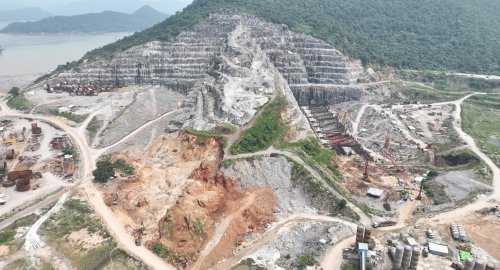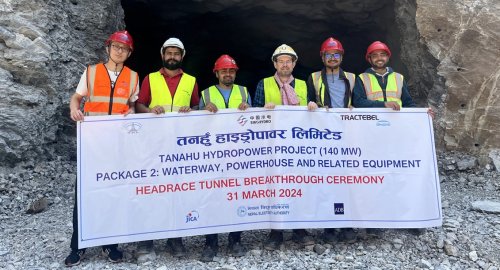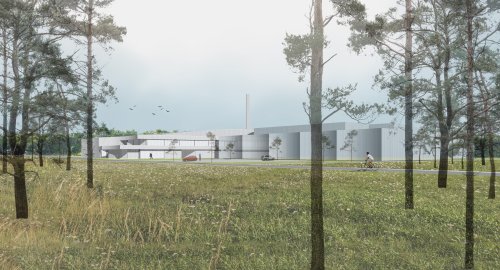
Hydroelectric project in India sets two world records
The 960 MW Polavaram hydroelectric project provides hydropower, irrigation, and drinking water to five regions across India’s...
Trouver plusGreen energy in abundance: Adding 456 MW of commercial production from the Upper Tamakoshi hydropower plant to the national grid enables Nepal to generate an energy surplus during the wet season. Our experts took over the implementation planning and construction management.
The Upper Tamakoshi Hydroelectric Project (UTKHEP) is a prestigious milestone in the energy transition in Nepal. The plant is located in a remote region of the upper Himalayas on the Tamakoshi River basin, about six kilometers from the border with Tibet. With a natural head of 822 m and six underground units, it produces up to 2,281 GWh of electricity annually. This renewable energy will improve living conditions and promote economic development in the country.
All six turbines and generators have been in full operation since September 2021. During the rainy season, the total electricity generation of Nepal will exceed what the population and the economy are currently consuming. The whole country can benefit in several ways from the surplus of electricity: Electricity costs will decrease and there are plans to supply consumers in need with electricity free of charge. In addition, Nepal could export electricity.
The Nepal Electricity Authority, Nepal Telecom, Citizens Investment Trust and Rastriya Beema Sansthan are the promoters of Upper Tamakoshi Hydropower Limited (UTKHPL). The general public has also made a huge investment through the company’s initial public offering (IPO). The UTKHPL, executing agency of the plant, is considering a second expansion stage, the Rolwaling Khola Hydroelectric Project (RKHEP) with an installed capacity of 20 MW. In addition to the 2,281 GWh annual energy from the UTKHEP, another 105 GWh would come from this new power plant.
Since 2011, our hydropower experts have been responsible for the implementation planning and construction management of the project, in cooperation with our partners. Our experts were involved in monitoring and planning as well as in construction contract management. They reviewed the design of the transmission line and inspected the construction activities for all structures. Despite the difficult terrain and major damage to the construction sites caused by the severe earthquake of 2015, the project team has rigorously followed its objective of meeting completion deadlines.

The 960 MW Polavaram hydroelectric project provides hydropower, irrigation, and drinking water to five regions across India’s...
Trouver plus
Nestled among the towering Himalayas west of Kathmandu, the Tanahu hydropower project reached a major milestone on March 31, 2024: the breakthrough of the 1.4-km...
Trouver plus
We caught up with Stéphanie Brine, Group Manager at Tihange nuclear power station in Belgium, to discuss her fascinating career path, her experience as a woman in...
Trouver plus
Avec son partenaire MODULO architects, Tractebel combinera son expertise en matière d'infrastructure et de nucléaire pour soutenir la conception et la construction de...
Trouver plus